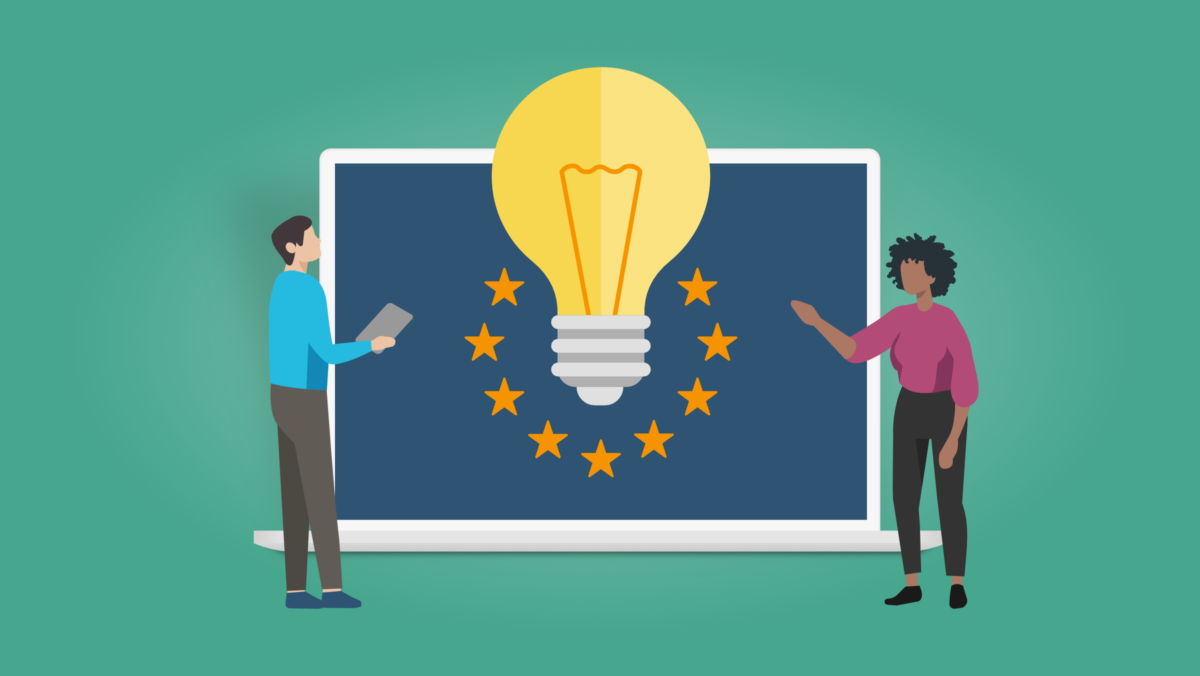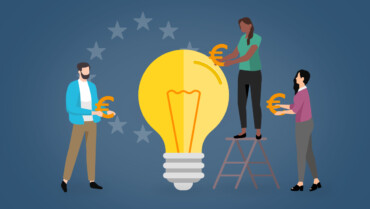Undertaking a research and innovation EU project is an exciting journey that can lead to groundbreaking discoveries and advancements in various fields. However, securing the right funding for your project is a critical factor in ensuring its success. European funding sources offer a wealth of opportunities for researchers and innovators.
Define your project goals and objectives
Before delving into the world of European funding, it is essential to have a clear understanding of your project's goals and objectives. What problem does your research aim to address? What innovative ideas or technologies will you be developing? Defining the scope and objectives of your project will not only help you target the right funding sources but also enable you to communicate the project's value proposition effectively to potential European funders.
Tip: Many programmes fund projects based on the technology readiness level (TRL) of the innovation. If you are not familiar with the TRL scale, read more to better understand what each level means and map your product, process or service onto it. This will help you refine the competitions you should be looking at.
Identify your funding needs
Once you have a well-defined project plan, it's time to determine your funding needs. Estimate the total budget required for your research and innovation project, considering all expenses, including personnel salaries, equipment, materials, travel costs, and other operational expenses. Understanding your funding requirements will help you identify European funding opportunities that align with your project's financial needs.
Explore European Union (EU) funding programmes
The European Union offers an array of funding programmes to support research and innovation projects. These programs are designed to promote collaboration across Europe and address a wide range of societal challenges. Some of the most prominent EU funding programmes include:
- Horizon Europe: Horizon Europe is the EU's flagship research and innovation program. It offers various funding instruments, including grants, prizes, and loans, to support projects in areas such as health, climate, digitalization, and innovation.
- Cohesion Policy Funds: These funds aim to reduce economic and social disparities across EU regions. Depending on your project's location, you may be eligible for funds like the European Regional Development Fund (ERDF) or the European Social Fund (ESF).
- European Institute of Innovation and Technology (EIT): EIT supports innovation ecosystems across Europe by fostering collaboration between universities, research centers, and businesses. It provides funding through its Knowledge and Innovation Communities (KICs) in various thematic areas.
- European Research Council (ERC): The ERC offers competitive grants for researchers at different career stages, from Starting Grants for early-career scientists to Advanced Grants for established researchers.
Tip: To explore EU funding opportunities, visit the official EU Funding and Tenders Portal (formerly known as the Participant Portal) and search for relevant calls and programs.
Investigate national and regional funding sources
In addition to EU funding, many European countries and regions offer their own research and innovation funding programmes. These programmes may have specific priorities and criteria, making them valuable options for researchers seeking local support. To identify national and regional funding sources, consider the following steps:
- National research agencies: Each European country typically has a national research agency responsible for distributing research funding. Examples include the German Research Foundation (DFG) and the French National Research Agency (ANR).
- Regional development agencies: Regional governments often provide funding to promote innovation and economic development in their areas. Contact your local or regional development agency to inquire about available programs.
- Collaborative projects: Some funding programs encourage cross-border collaboration between neighbouring countries. Look for initiatives like Interreg programs, which support transnational projects aimed at addressing common challenges.
Tip: Some regional development agencies will have pots of money to facilitate international cooperation and bid-development, so be sure to ask what financial support is available to help you apply for European funding.
Seek European private sector funding
Private sector funding in Europe can come from corporations, foundations, venture capitalists (VCs), and angel investors. European companies may be interested in supporting innovative projects that align with their business goals or corporate social responsibility initiatives. To find European private sector funders consider:
- Networking events: Attend industry-specific conferences, innovation expos, and networking events in Europe to connect with potential private sector investors and partners.
- Venture Capitalist (VC) firms: European VC firms actively seek opportunities to invest in innovative startups and early-stage companies. Research firms that specialise in your industry or technology sector.
- Corporate partnerships: Large European corporations often engage in research collaborations with academic institutions and startups. Explore partnerships that offer both funding and access to resources.
Leverage academic and institutional funding
European universities, research institutions, and academic organisations can offer a range of funding opportunities for researchers and innovators. These opportunities can vary by institution and may include:
- Internal grants: Many European universities and research centers allocate funds to support faculty-led research projects. These grants can cover various aspects of research, from initial concept development to project completion.
- Student scholarships and fellowships: If you are a student or supervising students as part of your project, inquire about scholarship programs and fellowships within your institution.
- Research centers and institutes: Some European universities host specialised research centers or institutes with dedicated funding for specific fields of study or innovation.
- Collaborative Initiatives: Collaborate with colleagues and researchers within your institution to explore joint funding opportunities. Collaborative projects often receive greater attention from funding bodies.
Tip: Academic and institutional funding opportunities are typically smaller than the large grants offered by the larger grant programmes such as Horizon Europe, but they can be a useful way of moving your project along incrementally, and also building a track record of accessing funding if you are new to the scene.
Utilise online grant databases
Online grant databases and search engines can simplify your search for European funding opportunities. While some of these databases cover global opportunities, you can filter your search to focus on European options. Useful databases include:
- CORDIS (Community Research and Development Information Service): CORDIS is the European Commission's primary source of information on EU-funded research and innovation projects. It provides details on open calls, project results, and funding programs.
- FundingBox: This platform offers a comprehensive database of European funding opportunities, with a particular focus on innovation and technology-related grants.
- EURAXESS: EURAXESS provides information on research careers and funding opportunities in Europe. It also offers job postings and mobility support for researchers.
When using these databases use specific keywords related to your project to narrow down your search and identify European funding opportunities that align with your research. Some databases allow you to filter results by country or region, making it easier to find grants that are geographically relevant to your project. Also, consider setting up alerts or subscribing to newsletters to receive notifications about new European funding opportunities that match your research interests.
Collaborate and network
Collaboration and networking are essential components of the European research and innovation landscape. Consider the following networking strategies:
- European research and innovation networks (for example, ERRIN, CrowdHelix): Join or engage with European research and innovation networks and communities related to your field. These networks often organize events, webinars, and workshops to facilitate collaboration.
- Horizon Europe National Contact Points (NCPs): Each European country has designated NCPs who can provide guidance on Horizon Europe and other EU funding programs. They can help you navigate the application process and connect with relevant contacts.
- European conferences and workshops: Attend European conferences and workshops in your research area to meet potential collaborators and funders. These events offer opportunities for networking and showcasing your project.
- Online platforms: Utilise online platforms and social media, such as LinkedIn and ResearchGate, to connect with fellow researchers, institutions, and potential partners across Europe.
- Collaborative proposals: Consider collaborating on proposals with researchers and organisations from different European countries. Collaborative projects often have higher success rates in securing EU funding.
Tip: Building connections with potential collaborators, partners, and funders can significantly enhance your chances of securing European funding.
Navigating European funding for your research and innovation project offers a myriad of opportunities to turn your ideas into reality and make a meaningful contribution to your field and society. By defining your project goals, identifying your funding needs, exploring diverse European funding sources, and networking effectively, you can enhance your prospects of securing the right funding for your project.
Remember, persistence and adaptability are essential traits in the pursuit of European research and innovation funding. With dedication and a well-crafted proposal tailored to European priorities, you can bring your innovative ideas to life and contribute to the progress of Europe's research and innovation landscape. Whether you are seeking funding from EU programs, national agencies, or private sector investors, the path to success lies in your commitment to excellence and your ability to align your project with European aspirations for a brighter future.
This article is written in a cooperation with our valued partner RedKnight Consultancy.

What is the Technology Readiness Level and why is it important for EU funding
This article delves deeper into the Technology Readiness Level (TRL) concept, examining its various applications and highlighting its significance in securing EU funding. Here you will also find expert insights and tips on this topic, as well as a guide to correctly assess your TRL for your proposals.




